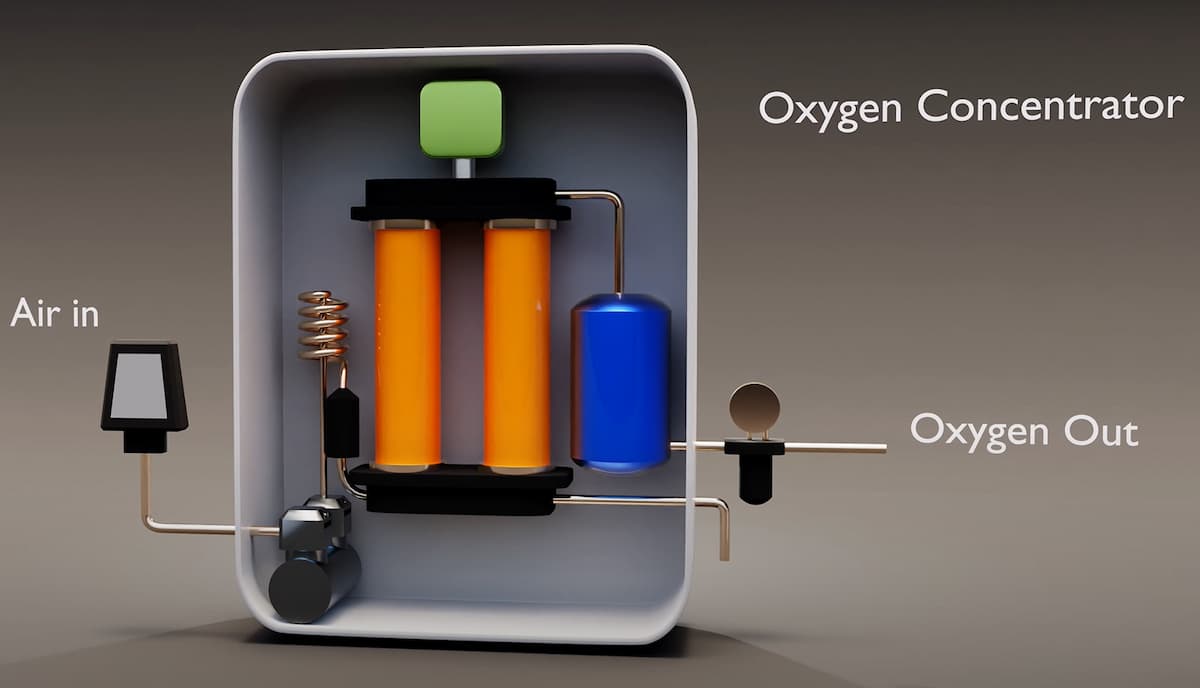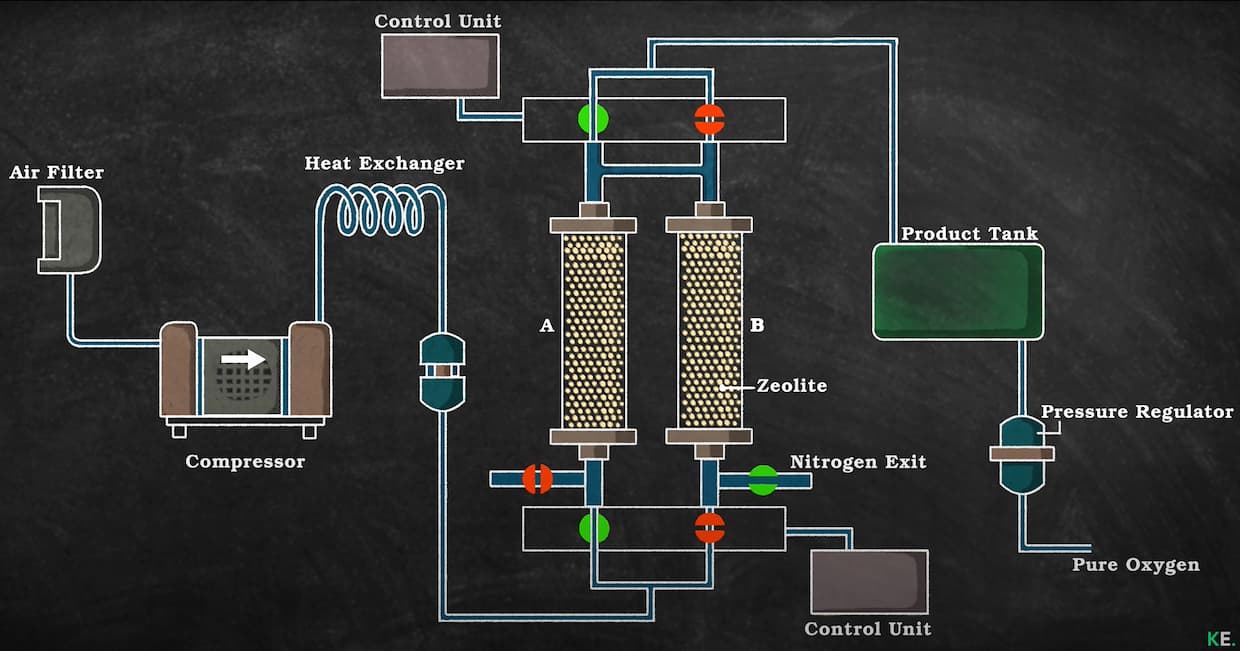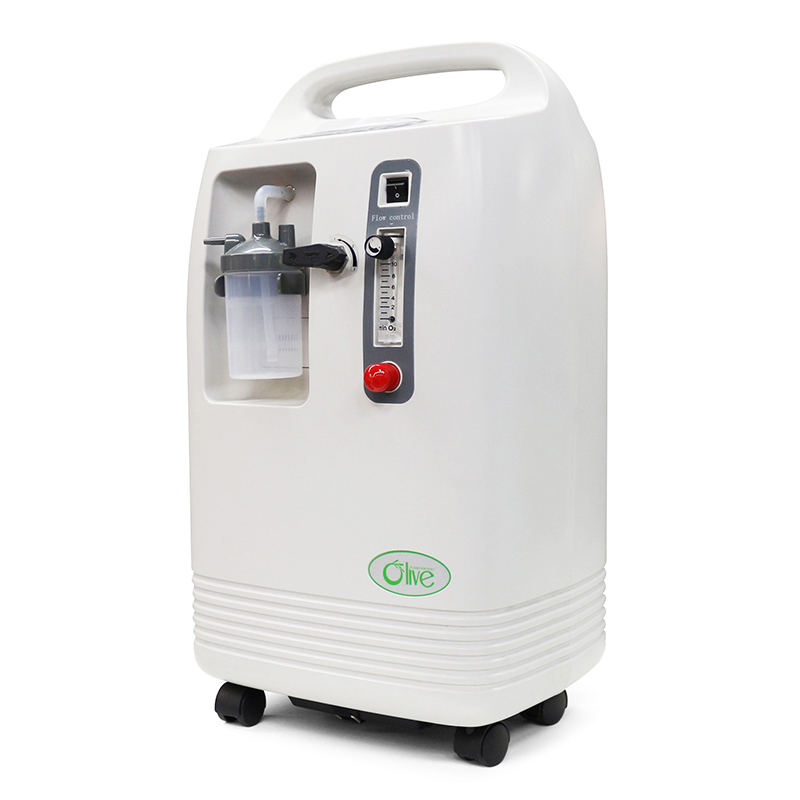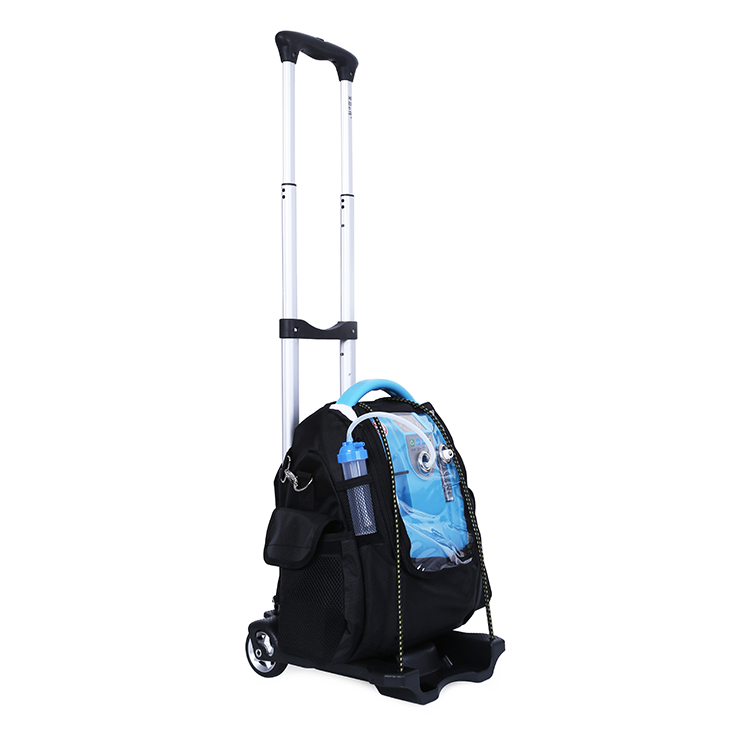An oxygen concentrator is a medical device that takes in air and filters out nitrogen to supply an oxygen-concentrated gas stream to patients who require oxygen therapy. It works using a molecular sieve - zeolite materials that adsorb nitrogen more readily than oxygen, allowing oxygen molecules to pass through while retaining nitrogen.
Primary Components

Inside the concentrator, air is compressed and fed into cylindrical tubes filled with zeolite pellets or beads. As the air passes through these beds, nitrogen molecules are captured by the zeolite, leaving oxygen enriched air to exit the other end. Typically two or more filter beds are used to achieve oxygen concentrations over 90%.
The concentrated oxygen then flows through a pressure regulator and flow meter that controls the delivery pressure and flow rate prescribed by the doctor, before going to the patient through a nasal cannula or mask.

The 5-Step Concentrator Process:
There are two main types of oxygen concentrators:
●Med/Home Oxygen Concentrators: Designed for continuous use at home, these larger units can deliver higher oxygen flow rates. They require an electrical outlet to run. Models include the Olive 5L--OLV-5S,10L Health Medical Oxygen Concentrator,and Olive 10L(OLV-10S)- For 2 Person.

●Portable Oxygen Concentrators: These smaller battery-powered units provide mobility outside the home. They offer lower flow rates for fewer hours. Popular portable models are the OLV-B1 5L,Mini Small Pulse Dose Portable,Travel 5 Liter Portable .
When selecting a concentrator, consider your oxygen needs, mobility, and budget. Your doctor will recommend the required flow rate. Higher activity levels may need a portable unit. Insurance often covers a large part of the cost for qualified patients.
Proper use provides optimal oxygenation. Always follow instructions from your doctor and equipment provider.
Regular cleaning and maintenance are key for the best performance:
Follow all maintenance procedures in the user manual. Cleaning supplies and replacement parts can be ordered from medical equipment providers.
Oxygen concentrators are commonly used to treat chronic lung conditions like COPD, pulmonary fibrosis, and severe asthma. They provide supplemental oxygen to help patients breathe easier and get improved oxygenation. Oxygen therapy helps manage symptoms and improve quality of life.
A stationary home oxygen concentrator can run continuously 24/7 as long as it is plugged into a power source. Portable concentrators run on battery power, typically 2-5 hours per charge depending on model, flow setting, and battery life.
The cost of an oxygen concentrator ranges from around $500 to $3000 depending on the type, features, flow capacity, and retailer. Insurance plans like Medicare may cover a portion of the cost if considered medically necessary by a doctor.
Oxygen concentrators can be purchased from home medical equipment providers, retailers like Amazon or eBay, or directly from manufacturers. It's recommended to work with a knowledgeable vendor that can help select the right model and features.
The lifespan of a 5-liter oxygen concentrator is typically 5-10 years when properly maintained according to the manufacturer's guidelines. Usage, maintenance, and the quality of the model impact the actual lifespan.
Oxygen concentrators use around 300-700 watts of electricity depending on the flow setting and model. At maximum flow settings, larger stationary units use more, while portable units use less. This equates to 20-60 kWh per month for typical daily usage.
Most oxygen concentrators have an audible alarm that sounds when there is a problem, like low oxygen purity or loss of power. The beeping can be stopped by pressing the mute or alarm silence button on the machine temporarily. The root cause should be addressed.
You may be able to use a portable oxygen concentrator in a vehicle if it can run on battery power without being plugged in. Stationary models require an inverter installed in the vehicle to convert DC power from the car battery to AC power. Always consult your doctor before using a concentrator in a moving vehicle.
Oxygen concentrators do not require water to function in most cases. Some may have a humidifier attachment, but the oxygen-concentrating function works without water. The sieves trap nitrogen, not moisture, from air.
Olive Focuses On R&D And Production Of High-end Oxygen Concentrators, Hydrogen Inhalation Machine,Hyperbaric Oxygen Chamber, Nebulizer.Trustworthy! Backed by Strong Research Institutions and Top Medical Factories, Faster Delivery.